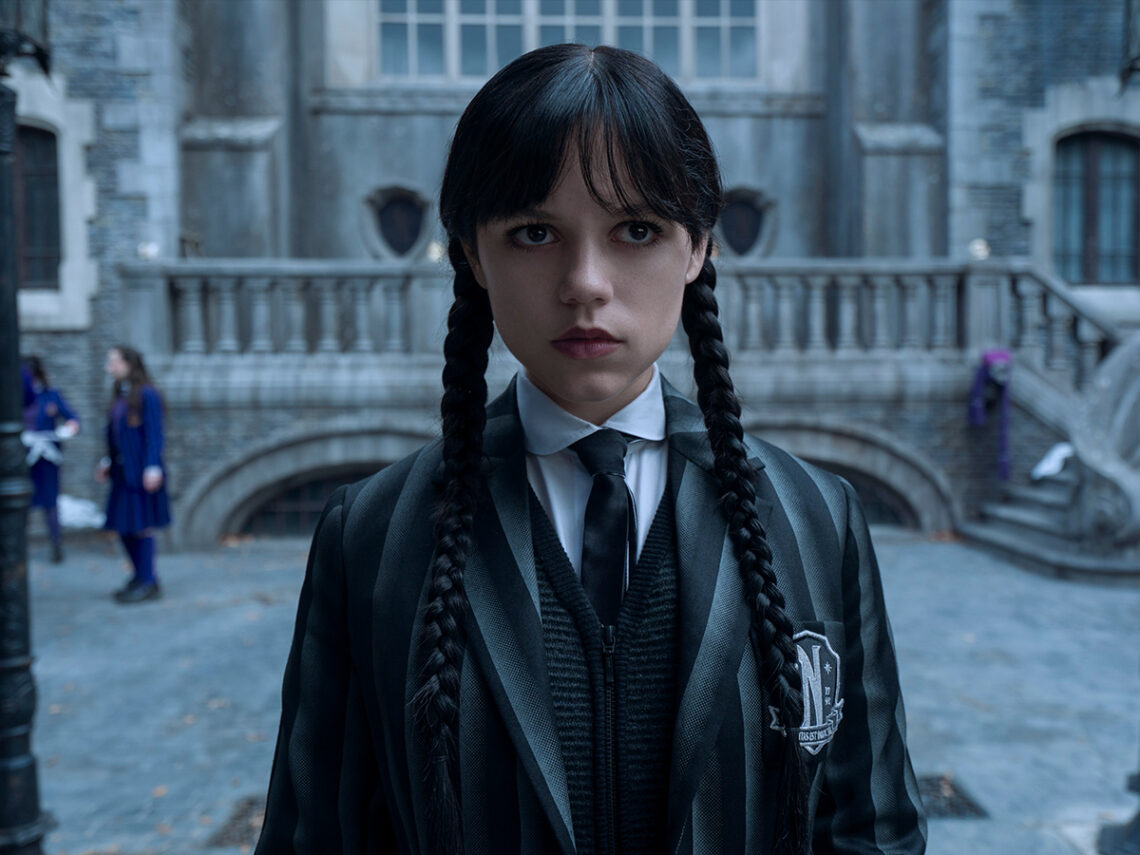
Every Easter egg from ‘Wednesday’ season two
Walking back into the Nevermore corridors was like inviting the dementors for a feast at Hogwarts – deliciously dangerous. But taking this journey was no cakewalk, neither for the fans nor for the creators. While fans may lament the two-part release of Wednesday season two, especially after the three-year gap between the debut and sophomore seasons, even with just four episodes, the Netflix series left the world reeling with blink-and-you-miss Easter eggs.
The first season was rich with Edgar Allan Poe references, Tim Burton Easter eggs, and Addams Family clues. And the second season is no exception. With over 30+ Easter eggs clubbed in the minutest sequences, Netflix has delivered literary gold wrapped in gory entertainment (via Tudum). Season two begins with Wednesday kidnapped and held captive in a serial killer’s basement, surrounded by creepy dolls.
The Netflix show revisits Wednesday’s childhood, panning the camera over the Kansas City Scalper’s victims as the dolls in the basement wear those same outfits as the victims in the flashback clip.
Meanwhile, the new headmaster, Principal Dort, portrayed by Steve Buscemi’s entire get-up, was inspired by Poe. Viewers can also spot a portrait of the legendary poet on a wall at the principal’s office.
Literary references
But Poe was not the only literary reference Wednesday conjured this time. The four Nevermore houses draw inspiration from Shakespearean characters. Wednesday and Enid reside in Ophelia Hall, a reference to Hamlet, while Pugsley and Eugune live in Caliban Hall, a nod to The Tempest. Thisbie and Puck Hall are named after characters from A Midsummer Night’s Dream.
Cinematic references
Wednesday season two is not just full of literary references but also cinematic ones. In the first episode, Ajax lets the outcast rookies in on an urban legend, The Skull Tree, around an unnamed student, who was a Nevermore prodigy but bedridden due to a heart condition. In order to save his life, he replaced his heart with a mechanical replica. The mythology is told via a stop-motion animation scene, and the character design is inspired by Frankenstein (1921).
Burton also borrowed from Night of the Living Dead (1968) to bring Slurp to the screen. Owen Painter also watched The Three Stooges and The Man Who Laughs for inspiration for Slurp. Meanwhile, the scene in Willow Hill with all those patients is a mirror work of One Flew Over the Cuckoo’s Nest.
Real-life inspirations
Even real-life people inspired character designs – Daphne Guinness’s personality and hairstyle influenced Grandmama, and Florence Welch inspired Isadora’s style.
The influences are not just in terms of characters and locations. It’s also in the props. Barcelona architect Antoni Gaudí is said to have inspired the swords of the Camp Jericho duel. “The hand guards of the weapons share Gaudí’s signature spindles and twisted lines.”
Addams family references
Like the first season, Wednesday’s second outing was not without Addams family nods. Morticia’s stay at Nevermore took nine weeks to build. Trees, slugs, snails, and flowers are carved on the fireplace while the stained glass windows flaunt roses. The Addams family shrunken head décor features actor Luis Guzmán’s likeness. Several other things in the room are nods to the 1960s TV series, including a stuffed bear, an iron maiden, a taxidermied tortoise, and a fan-back chair.
In fact, Wednesday’s attic bedroom has several nods to Charles Addams’ original cartoons from The New York Magazine -the octopus on the bedside, a dinosaur mural, and a doll-sized guillotine. The organ in Nevermore’s music room takes inspiration from Nosferatu (1922). So, if you have missed out on any, Wednesday season two is currently streaming on Netflix.